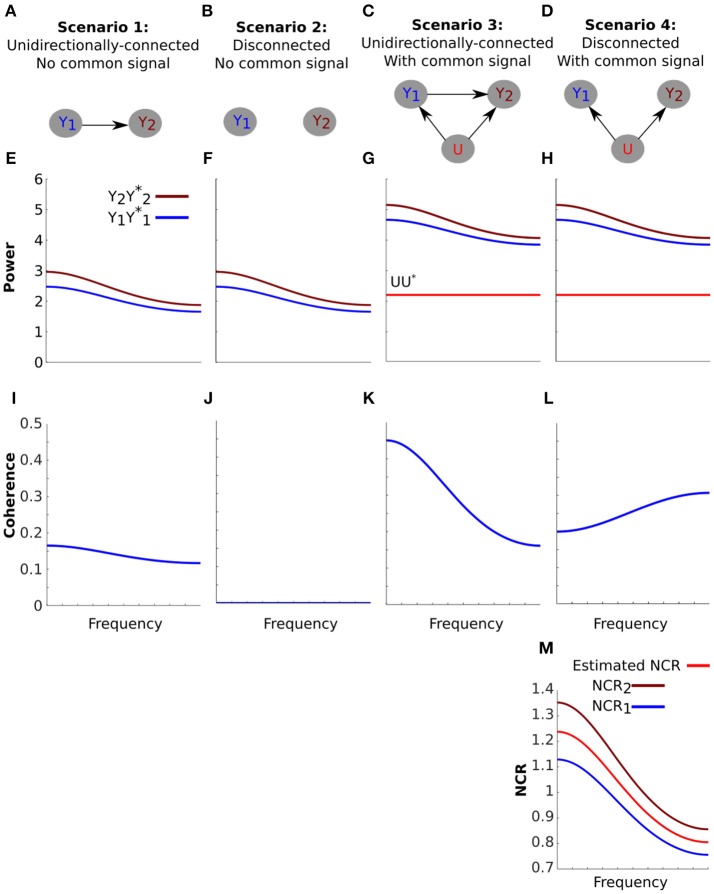Figure 2.
The effect of a common signal on coherence is highly dependent on the spectral characteristics of the system. (A-D) Schematics of four simulated scenarios corresponding to a unidirectionally-connected system without a common signal (A), a disconnected system without a common signal (B), a unidirectionally-connected system with a common signal (C) and a disconnected system with a common signal (D). (E–H) The power of the signals for each scenario (arbitrary units). The systems were constructed to have identical power spectra (E vs. F and G vs. H). The effect of the common signal on power (G,H) is an increase equal to the power of the common signal (UU*, horizontal red line). (I–L) Coherence between the signals for each scenario. Coherence for the unidirectionally-connected system is low and decays with frequency (I) and coherence for the disconnected system is zero (J). When a common signal is added to the unidirectionally-connected system coherence values increase overall but still decay with frequency (K). When a common signal is introduced to the disconnected system coherence values also increase, but now coherence increases with frequency (L). This unexpected increase is explained by the Neural to Common signal Ratio (NCR) of this particular system (Equation 13). (M) NCR1 (blue) and NCR2 (brown) refer to the NCR of nodes one and two respectively. Because the NCRs for this system decrease with frequency, coherence increases with frequency. From the observed coherence in (L), we can also estimate the NCR using Equation (14). The estimated NCR is shown here in red, which falls between the value of NCR1 and NCR2.

